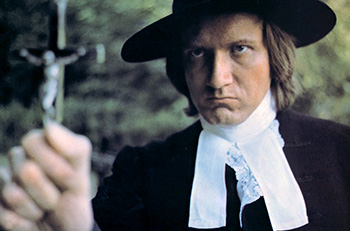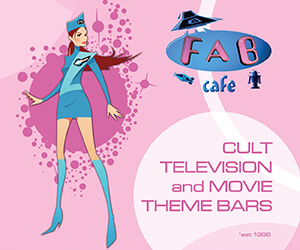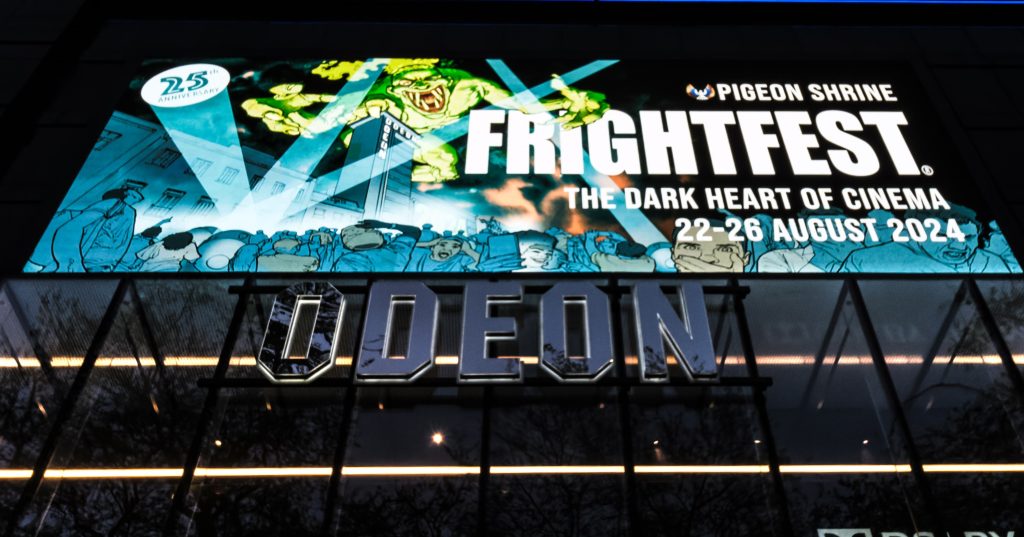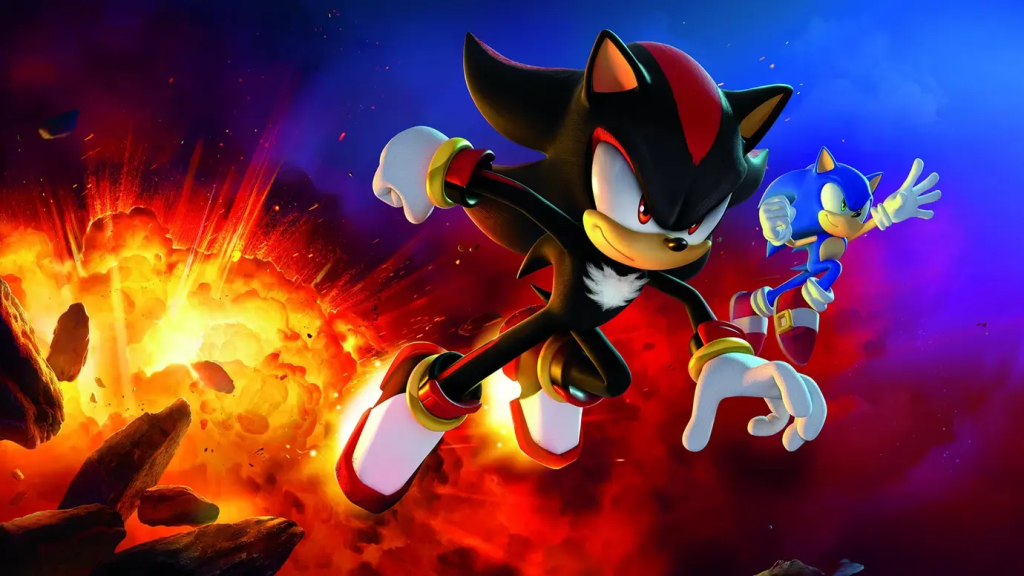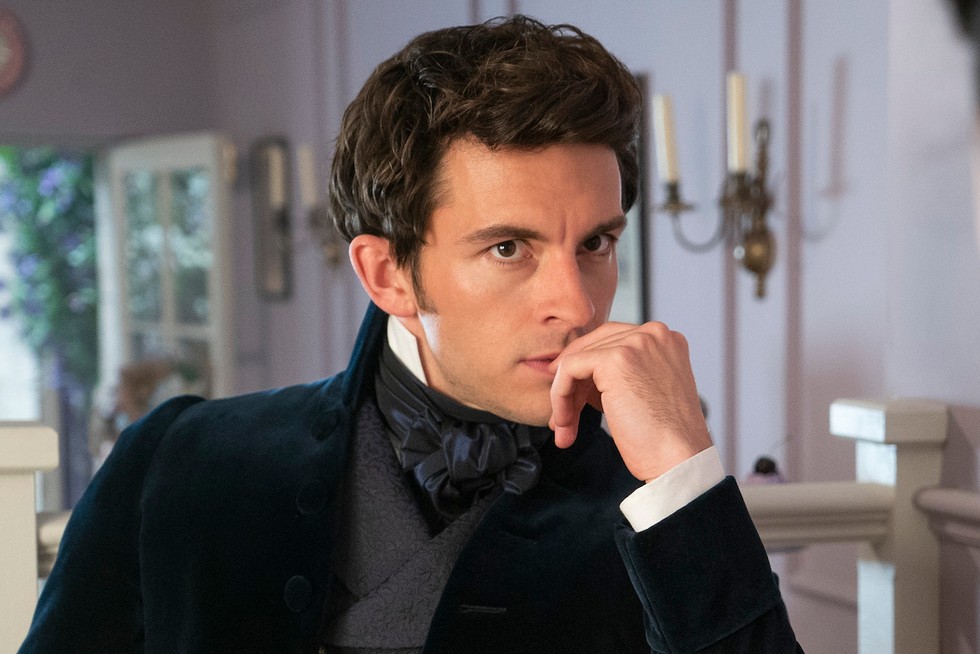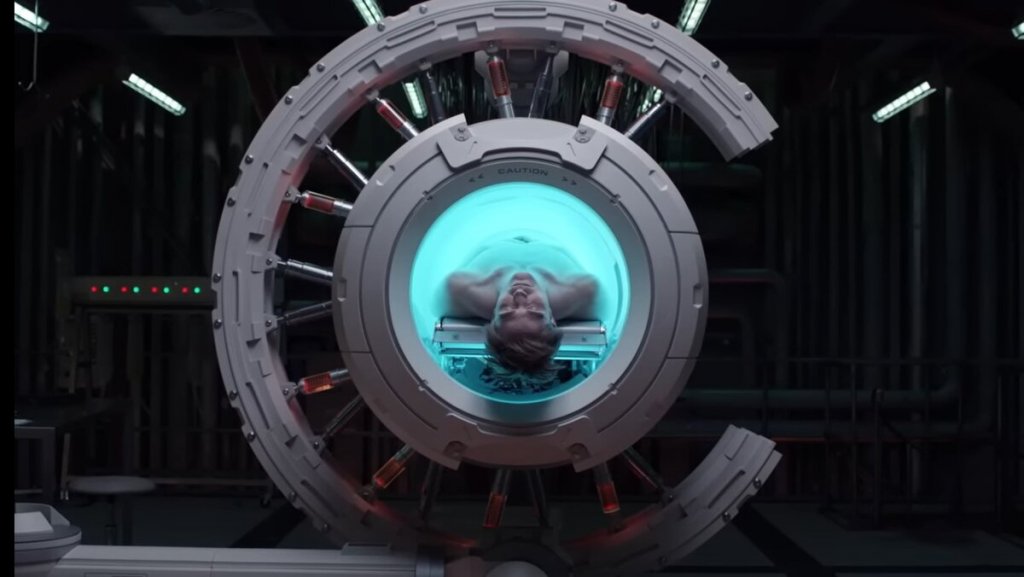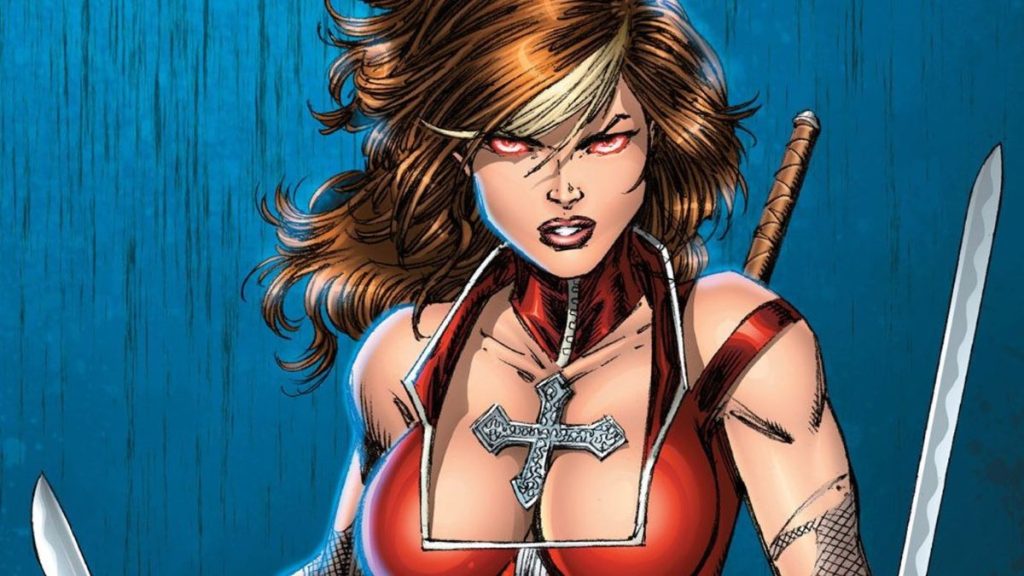 The late seventies were a boom time for independent artists. Punk rock was breaking the rules of how music was made and cinemas were bursting with small-budgeted films and larger movies made by directors who had risen from film schools rather than a studio system. In the UK, Hammer and Amicus paved the way for a burgeoning horror scene that attracted talented young filmmakers to find their own finance for movies, much in the same way the Internet and digital have done for modern directors.
The late seventies were a boom time for independent artists. Punk rock was breaking the rules of how music was made and cinemas were bursting with small-budgeted films and larger movies made by directors who had risen from film schools rather than a studio system. In the UK, Hammer and Amicus paved the way for a burgeoning horror scene that attracted talented young filmmakers to find their own finance for movies, much in the same way the Internet and digital have done for modern directors.
Norman J. Warren came onto the scene in the late ‘60s with a pair of ‘sexploitation’ dramas, Her Private Hell and Loving Feeling. Both were incredibly successful at the box office – as most sex orientated films were, but it was several years – 1975, to be precise – before he’d get the chance to make another movie. That film was Satan’s Slave.
It’s a curious story of a young girl, Catherine (Candace Glendenning, who had made an impression with her roles in Pete Walker’s The Flesh and Blood Show and Tower of Evil, which was produced by Richard Gordon), visiting a mysterious uncle (played by the wonderful Michael Gough) with her mother and father. Tragically, just as they get there, they crash and her parents perish in the fiery car. Uncle Alexander takes Catherine in and looks after her while she’s in shock. It’s here she meets his son, Stephen (Martin Potter, an amazing talent of the time who starred in several cult classics such as Goodbye Gemini among others) and Frances (Barbara Kellerman). As she convolutes in the opulent grounds of Alexander’s home, she becomes very close to Stephen. However, we’ve already seen a darker side to him and his family. In the opening scenes, a woman is sacrificed in an occult ceremony, and we’ve witnessed Stephen trap the head of one of his lady friends in a door when she takes exception to his attempted rape. We can sense quite clearly that young Stephen is more than a few slates short of a full roof. Laughing maniacally on a bed will always give that impression.

Catherine, in the meantime, is suffering hallucinations and feelings of dread, but she is certainly not prepared for the warning Frances has for her. She is to be sacrificed, apparently, in an attempt to resurrect an ancestor, Camilla York (played by Glendenning in the flashbacks) using Catherine’s body as a vessel. Camilla was said to be a potent witch and Alexander plans to utilise her revived powers for his own evil doing.
Trying to help her escape, Frances falls foul of Stephen and is left hanging around on the back of a door (via a knife through her throat) and Catherine is locked away to await the terrible ritual. We won’t spoil the ending, but rest assured there’s still some great surprises.
Satan’s Slave was written by David McGillivray, who is best known for his work with Pete Walker (House of Whipcord, Frightmare, and House of Mortal Sin and still very much active in the business) and epitomises the grittier side of British horror cinema of the seventies: copious amounts of Kensington Gore, plenty of naked ladies, and an atmospheric and striking score (by the legendary John Scott).
To fully get a feel for the movie, we spoke to director Norman J. Warren; and began with asking how he managed to arrange financing for the film. “Initially, we did shop around, we went to a few distributors we were half interested, but not that committed. We then started going to private individuals and after a while, we did find one or two that were interested, but we got to the stage where we would have fifty percent of the money, but we’d have to go and find the other fifty percent. By the time we found our half, the people putting up the first fifty percent had changed their mind! That went on for over a year. The other thing that was a nuisance was dealing with people who had nothing to do with the business, they always wanted to make changes to the script – and some of those changes were quite ridiculous. In the end, it got so frustrating, and we were getting absolutely nowhere, Les Young, who was the cameraman and producer basically just said ‘Why don’t we just try and do it anyway?’ We ended up with £15,000 in cash and had a lot of favours coming in from companies and people all agreeing to work for small fees.”
This cost-cutting even extended to the director himself, “I was already an editor – I’d been doing that for some years – I agreed to do that to save money. I’m not credited as such on the film because in those days, film shoots were very much controlled by the unions and you were not allowed to do two jobs! So there’s no editing credit at all! Strangely enough, the union never actually asked why there was none!”

As mentioned, Satan’s Slave came quite a few years after Norman’s initial success, and was his first horror thriller. He explained the delay, “It really happened out of frustration of other things not happening. I was meant to be doing a film for Amicus called The Book of Seven Seals but after endless meetings with Milton Subotsky, they decided not to go ahead with it. That was a disappointment, but the big one for me was a film called The Naked Eye, which was for American International Pictures (A.I.P.) and it would have starred Vincent Price. That went on for about eighteen months and over that time they kept putting the budget up a bit, and in the end turned around and said this film’s too expensive! It was such an enormous disappointment at the time for everybody. It would have been so exciting working with Vincent, as he was such an enormous star at that time. You never know in life what’s going to happen; had I done that film, my whole career could have taken another route.”
This is a situation that rings true even today, as Norman continues, “I feel sorry for young directors now, they are given some opportunities now that look great on paper, but it if goes wrong, you’ll never get asked again. You get a lot of first time directors who make one film and you never hear of them again! It’s all to do with box office. I was so lucky, really because when I did Her Private Hell, the subject was still rather difficult, even though the film was so naïve; but they publicised it on the sex, and it made a fortune. As a result, it was a wonderful start for me – you can’t do better than make money. I’m happy to say, all my films – with the exception of Bloody New Year (1987) – have made money.”
The film opens with the most evocative credits sequence, with an animated skull, something that sets the tone and also makes the film stand out from similar movies of the time, “They were all the idea of Hayden Pearce, who was the art director,” Norman tells us, “one of the most talented people I’ve ever known. I’ve worked with Hayden on everything including documentaries and commercials. He animated and shot it himself over a weekend, including doing the artwork as well.” These is set perfectly to the haunting music of John Scott, “That’s another thing in itself – John Scott’s such a talented musician. The score is actually such a very simple piece of music, but the way he does it, it goes into your mind and you can actually remember it! It’s a simple theme, but it works.”
An element of the film that provides some rich atmosphere and an impression of a much larger budget is the location. A grand house in the middle of woodland is an ideal hideaway for someone looking to conduct occult rituals. Norman told us, “That was once again Hayden – he was searching out properties, and to be honest, we were getting pretty desperate, we couldn’t find anywhere. Most places were not suitable or the people were not interested. And because we didn’t have any money, we needed a house that also had furniture in it. Hayden was ringing everyone he knew in connection to art departments and someone suggested the mock Tudor house in Pirbright, and we couldn’t believe our luck. Not only did it look great outside but everything in there was genuine – there were wall-to-wall paintings and it was fully dressed. The people were quite happy for us to use it. There were five acres of land including those woods, and another bonus was we found there was a sub-station there. We got in touch with the electricity company and we were able to get as much power as we needed from that.” It was a find that both Norman and other filmmakers were keen to utilise again, “It subsequently got used by other people; it was in Virgin Witch, and, of course, we used it again for Terror. It was too good a location to lose. It belonged to a Baron and Baroness, and they didn’t mind what we did. We didn’t damage the place at all, we were very careful and when we finished, we sent in a team of cleaners and it looked better than when we’d arrived! They were an elderly couple, so there were cobwebs everywhere. You’d never actually find it if you tried, it was so tucked away – which was also a bonus for us.”
There was one issue with the setting as they found out when filming began, as Norman tells us, “There was no problem with sound except Pirbright is right next to the military establishment. We only found out when we started filming that every Tuesday and Thursday, they used to play wars, and they would blow things up outside and fire off cannons. We were filming on our second day outside and it sounded like a war had started; we had to stop and go back inside because we couldn’t hear a thing.”
This in itself had an added bonus, “We came to film the car crash – when it bursts into flames – we actually did that on the military land.” Norman continues, “The problem with blowing a car up like that is you have to do it safe, of course, but you have to get rid of it afterwards. That would be extra expense, but we talked to the military and they let us do it there; they didn’t mind us leaving it as they could shoot it up afterwards.”

The cast of Satan’s Slave are exemplary, and Norman has nothing but good memories of working with them. Michael Gough, in particular, “He was an absolute joy, a really lovely man. He just joined in with everything and was always word perfect, so professional. He never complained, and we worked some unbelievable hours.” There was also no ‘superstar’ ego with the legendary actor, “We had him for three weeks, and he lived in Norfolk at the time, and we couldn’t afford a hotel or anything and he said ‘Don’t worry, I’ve got a friend and I can stay with them’. So he slept on their couch, and we’d pick him up at 5.30am and he was squashed in the back of an old Ford Escort – we had no limos! We usually worked until about midnight, and we’d stop off on the way back and buy fish and chips to eat in the car and that was dinner! He actually seemed to enjoy it.”
This lack of budget extended to the basic things on the film, too. Including what the characters wore, as Norman explains, “Apart from the opening scene in which he’s wearing the satanic robes, everything else he was wearing were his own clothes. I said to him at the beginning, ‘We haven’t got any money for wardrobe’, and he suggested wearing his own. The next day, he came to my front door with two suitcases with his entire wardrobe, and promptly put things on and said ‘tell me what you like’.”
The other male lead, Martin Potter, was another blessing for the film. “We really got lucky there, as Michael Gothard (The Devils) was going to do our film, but right at the last minute, he backed out. We were in a desperate position so rang round some agents and they suggested Martin Potter, who’d just finished shooting The Legend of Robin Hood for TV. He just became the character. It’s a part that if you got it wrong, it would be very silly, and it’s like a controlled madness. You just never know when he’s going to change.”
Potter not only played a visually striking character, his intense looks also made him a compelling screen presence and did draw attention when the crew went out, “His eyes are really something else. We used to go and have lunch at the local pub; Martin was actually on TV with the Robin Hood show at that time. So his face was well known to people, and a lot would come into the bar while we were there and they’d make jokes about it, most days Martin would take it well and smile but sometimes if he wasn’t in the mood, he’d give a look with his eyes and people would just run off!”
Although the film was made with a low budget, the make-up effects were amazing. They were the work of Robin Grantham and Nick Maley, and there was one particular effect that Norman remembers well, “The thing that was a work of art on Satan’s Slave was when Martin Potter gets the nail file in the eye, that stands up pretty well in a still, which is always a good sign with make-up. There’s actually a false eye in front of Martin’s eye that has a support to hold the nail file in place. Then you have all the eyelids and eyelashes and face built up on top. There’s also a blood supply to the eye, which goes under the hair, round the ear and down the face; the fact we managed to get all that on Martin’s face without it sticking out – it would have been completely out of balance. It is a bit bigger, but it stands up in a close-up. It’s a remarkable achievement.”

Following post-production, which as Norman explained was a nightmare since he was attempting to edit the footage on rented equipment in his house at all hours, the film was picked up for distribution by Brent Walker. It got the film out to an audience, but wasn’t the best situation, as Norman tells us, “We did ok, but they did kind of rip us off. We did get enough back to pay everyone off, and eventually, we got some money back, and enough for them to say ‘you can do another one’. They did very well out of it, they put it out three times.”
UK audiences can enjoy Satan’s Slave again, or discover it for the first time as the rights reverted back to Norman after the Brent Walker deal ended. It will also make an appearance on UKTV, so it will no doubt gain a whole new legion of fans. It’s something Norman is more than thrilled about, “Out of all of my films, it seems to be one that people like – they are always wanting to talk about it, and I have fond memories of it.”
SATAN’S SLAVE is next screened on Horror Channel on December 16th. Sky 319, Virgin 149, Freeview 70, Freesat 138.

